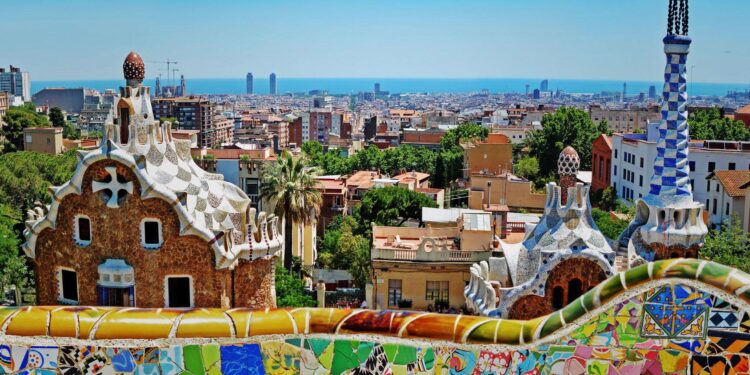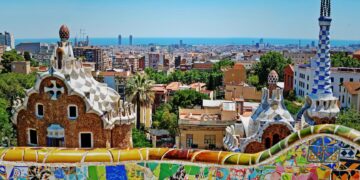Barcelona, Spain: World’s Most Crowded Tourist Spot Now Faces Growing ‘Tourismphobia’ Amid Overtourism and Rising Local Tensions
Barcelona, the vibrant Catalan capital renowned for its stunning architecture, rich cultural heritage, and lively street life, is facing a growing sentiment of resistance among its local population against the relentless tide of tourists that flood its streets each year. Once celebrated as a beacon of cultural exchange, this Mediterranean metropolis is now grappling with the consequences of overtourism, leading to an emerging phenomenon dubbed ‘tourismphobia.’ As visitors continue to descend upon famed landmarks such as the Sagrada Familia and Park Güell, the mounting pressure on local resources and infrastructure has sparked tensions between residents and travelers. In this article, we explore the complex interplay between tourism and community sentiment in Barcelona, examining how the city is adapting to the challenges posed by its own success as a global destination.
Consequences of Overtourism on Barcelona’s Local Communities
The impact of overtourism on local communities in Barcelona is becoming increasingly evident, as residents grapple with the encroaching influx of visitors. With local businesses often catering to tourists rather than the community, many locals find their neighborhoods transformed into temporary playgrounds devoid of their authentic character. Essential services, including housing, are experiencing strain as short-term rental properties proliferate, driving up costs and pushing many residents out of their increasingly unaffordable neighborhoods. This has led to a pushback from citizens, generating a rise in sentiments ranging from frustration to outright resistance, branded as ‘tourismphobia’.
Moreover, the ramifications extend beyond economic concerns, affecting the social fabric of the city. Many residents report feelings of alienation in their own spaces as the sheer number of tourists makes day-to-day life more challenging. This sentiment is reflected in the following points:
- Loss of cultural identity: Traditional customs and local practices are overshadowed by the demands of a tourism-centric economy.
- Community displacement: Long-term residents face challenges in finding affordable housing due to the rise in vacation rentals.
- Social unrest: Public demonstrations and conflicts between tourists and locals have become more common as tensions rise.
Strategies for Balancing Tourism and Resident Well-Being in Barcelona
To address the dual challenge of thriving tourism and resident well-being, local authorities and stakeholders must implement effective strategies that prioritize harmony within the vibrant fabric of Barcelona. One potential approach is to diversify tourism offerings, which entails promoting lesser-known neighborhoods and cultural experiences beyond mainstream attractions. Such measures can help disperse the tourist load and instill a sense of pride among residents for their unique local heritage. Furthermore, enhancing sustainable travel practices, including eco-friendly transportation and waste reduction initiatives, can mitigate the ecological footprint left by mass tourism, ultimately benefiting both visitors and locals.
Another key initiative involves fostering collaboration between tourists and residents. Programs that encourage engagement through community-led tours or local event participation can create meaningful interactions that break down barriers. This can be complemented by the implementation of a visitor cap in highly congested areas, ensuring that peak times do not overwhelm local infrastructure and services. Additionally, establishing tourist education campaigns that emphasize respect for local customs and spaces can further curtail resident discontent, enabling a more sustainable coexistence in this iconic city.
The Role of Sustainable Practices in Alleviating Tourismphobia in Spain’s Jewel
As overtourism continues to strain the fabric of Barcelona, sustainable practices have emerged as critical strategies for restoring balance between residents and visitors. By implementing responsible tourism guidelines, the city can promote behaviors that enhance the local experience for both tourists and citizens alike. This includes encouraging tourists to engage in eco-friendly transportation methods, patronize local businesses that prioritize sustainability, and participate in programs designed to protect the city’s rich cultural and natural heritage.
Moreover, the adoption of sustainable tourism practices can significantly reduce the negative impacts of mass tourism. Initiatives such as green certifications for hotels, waste reduction campaigns, and the establishment of limits on visitor numbers in sensitive areas are essential steps toward reversing tourismphobia. Implementing strategies that prioritize community input will ensure that residents feel heard and valued, fostering a sense of ownership over their environment. The potential benefits of such initiatives are manifold, as they not only preserve the essence of Barcelona but also enhance its appeal as a destination that champions sustainable and thoughtful tourism.
Key Takeaways
As Barcelona grapples with the dual pressures of overtourism and rising local discontent, the city finds itself at a crossroads. The phenomenon of “tourismphobia” is revealing deeper societal fractures, as residents voice their concerns over the detrimental impact of mass tourism on their daily lives and community fabric. While the vibrant energy of tourists has long been a cornerstone of Barcelona’s identity, this reliance on visitor influx now threatens the balance between local heritage and economic benefit. In response, city officials, businesses, and community leaders must come together to forge sustainable solutions that prioritize both resident well-being and the preservation of the city’s unique cultural landscape. As the world continues to reopen, the future of Barcelona hangs in the balance-challenging the notion of the tourist haven while advocating for a more harmonious coexistence between visitors and locals alike. The time to reassess and redefine the boundaries of tourism in this iconic city is now, and its success may serve as a model for other destinations facing similar dilemmas.













